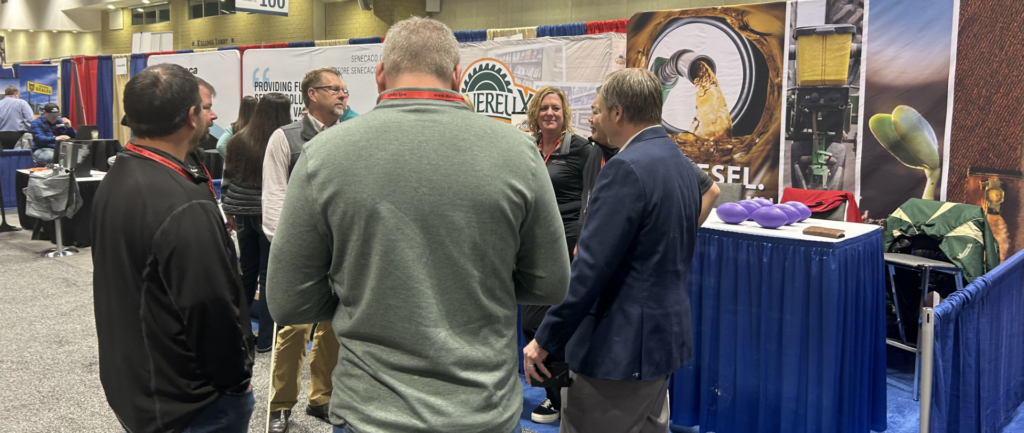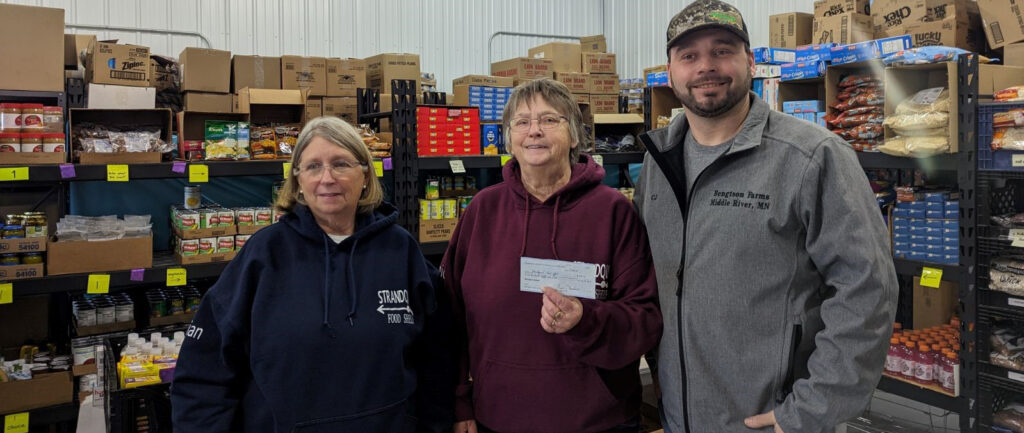The Ag Peer Group is centered in Northwest Minnesota. It is a small group composed of young individuals with diverse backgrounds: farmers, research and graduate students, crop consultants, extension educators, cooperative/association employees and agriculture business employees.
The Ag Peer Group is funded and supported by the Minnesota Soybean Research & Promotion Council (MSR&PC), Minnesota Association of Wheat Growers, Northwest Minnesota Farm Bureau, and Your Source of Growth Fund.
“We are happy to support the growth of the Ag Peer Group,” says David Kee, Minnesota Soybean’s director of research. “Developing the next farming leaders is critical to the future of agriculture, and this program is a great resource for young people looking to make ag their profession.”
These Ag Peer Group members plan to better themselves and their farms/careers by building relationships among this diverse group of individuals through educational events, learning from each other, seeing how agriculture connects each of them together and team building. Although it’s a diverse group, they all have a passion for agriculture and plan to make it a career.
“These young agriculture professionals are impacting Northwest Minnesota agriculture right now, and they will have a much bigger impact in the future,” says Kevin Leiser, a Fertile, Minn., farmer and chairman of the Minnesota Wheat Council.
The group held their first meeting in March 2017 when they toured the North Dakota State University Greenhouse, heard from other peer groups and had a lively discussion about what they wanted to get out of their involvement in this Ag Peer Group. The latest get-together was at the end of July at the Ada research plots on the Pete Kappes Farm. It was a production and research-focused afternoon. J Stanley, Ag Peer Group and NDSU graduate student talked about the soybean survey work he was doing for his master’s program.
The soybean survey work is funded by checkoff dollars. The goal is to identify production-limiting factors by surveying and working directly with farmers to collect information from their fields. Stanley talked about the scouting he does and some of the unique things they are discovering.
Other Ag Peer Group members preparing an educational activity were Ethan Hulst and Ben Generoux, both young Central Crop Consultants. They collected many samples of herbicide-resistant weeds and showed examples of weeds that were completely burned, but kept on growing. They gave everyone a weed ID quiz and shared what they see as they scout hundreds of fields on a weekly basis. This sparked a lot of questions, robust discussion and learning among their peers.
Matt Rellaford, an Ag Peer Group member and NDSU graduate student, discussed his research that is using sensors to determine in-season nitrogen needs for spring wheat. He shared imaging from the drones he is using with sensors to capture differences between the various treatments in the small plot research he has. He also demonstrated a drone that went out and sent back pictures of the ADA research plots so no one had to get out from under the tent to go and see the plots.
“I think it was a really good learning experience for these young people to connect with ag professionals,” says Corey Hanson, a Gary, Minn., farmer and treasurer of the Minnesota Soybean Growers Association.
Rellaford and another Ag Peer Group member, Lauren Proulx, are working together on some large scale on-farm research trials through the Minnesota Wheat On-Farm Research Network, where Proulx works as a coordinator and agronomist. Growers like Pete Kappes are cooperating by putting a nitrogen-rich strip in their wheat fields, and Rellaford is flying with them with a drone, equipped with sensors to see how they may help with predicting nitrogen needs. His research is a good example of how small plot research can intersect with on-farm research. Lauren also talked about some of the other research growers are doing in the On-Farm Research Network.
The organizers arranged for a helicopter owned and operated by Dean Solum of Airborne Custom Spraying in Hendrum, Minn., to take the groups. Before Solum took groups of three in the helicopter, he talked about being an agriculture spray pilot and all the changes that have taken place in his field. Solum advised the group to continue building relationships; he said some of his strongest relationships were developed at a younger age.
“This is a unique opportunity for young farmers to cultivate professional relationships and enhance their decision-making skills,” Kee says.
So, why is there so much time and resources being put into this Ag Peer Group? Bruce Hamnes, a well-known retired farmer and agriculture leader from Stephen, Minn., may put it best.
“The best investment you can make is in people,” say Hamnes, who started the You Source of Growth Fund to help fund the Ag Peer Group. “I like how young farmers can learn from each other and from other professionals. I particularly like the idea that production research is emphasized because of the involvement of the young agriculture researchers.”
Portions of this article were originally published in Prairie Grains Magazine’s August 2017 issue.







